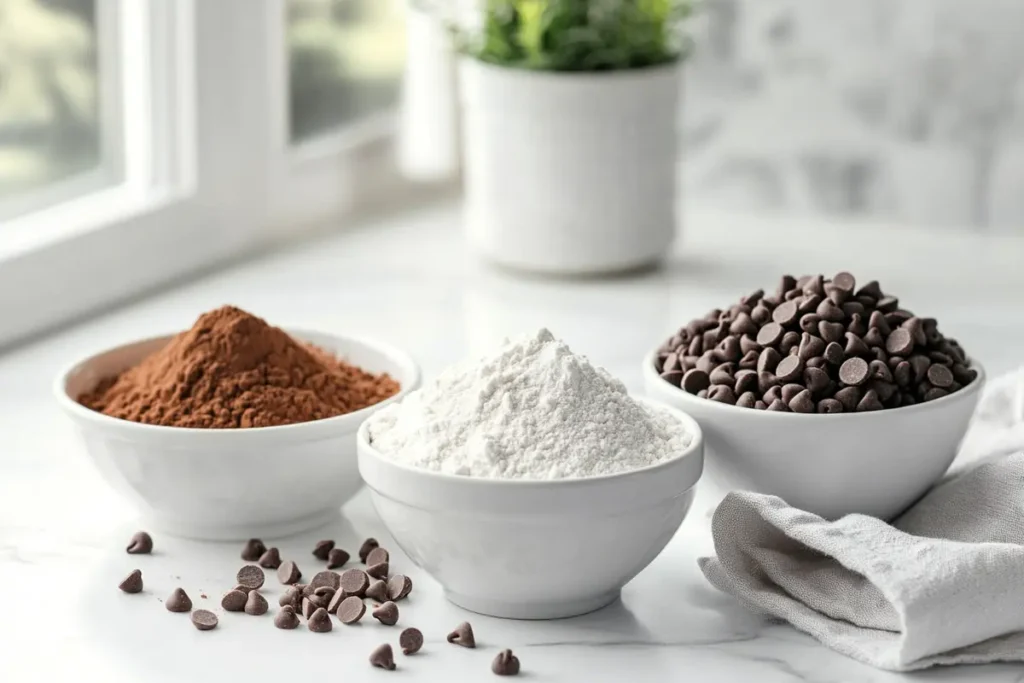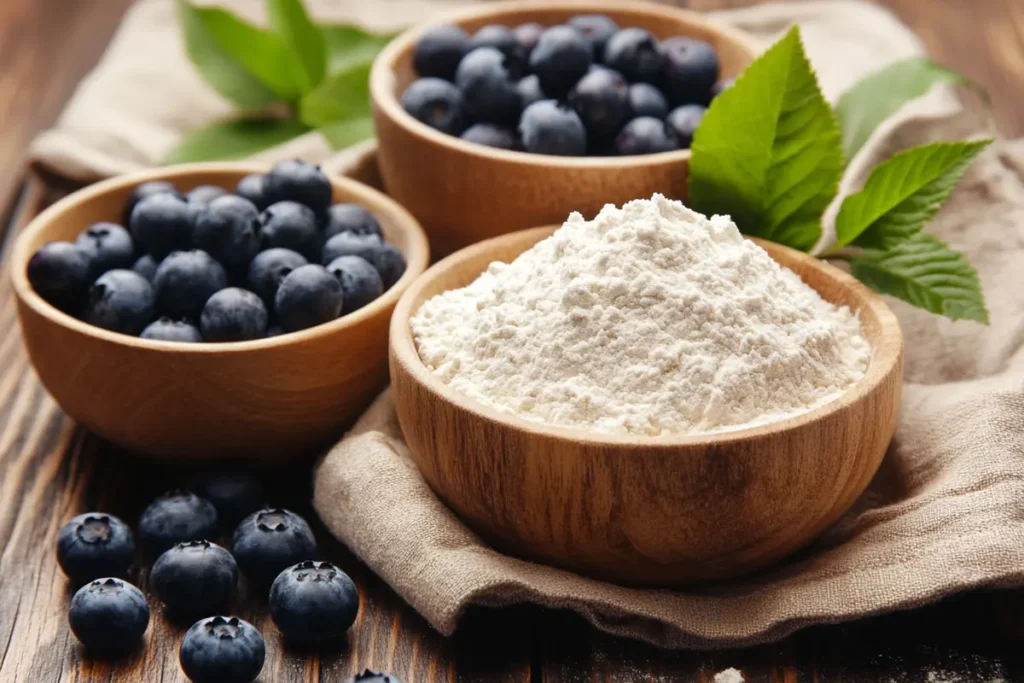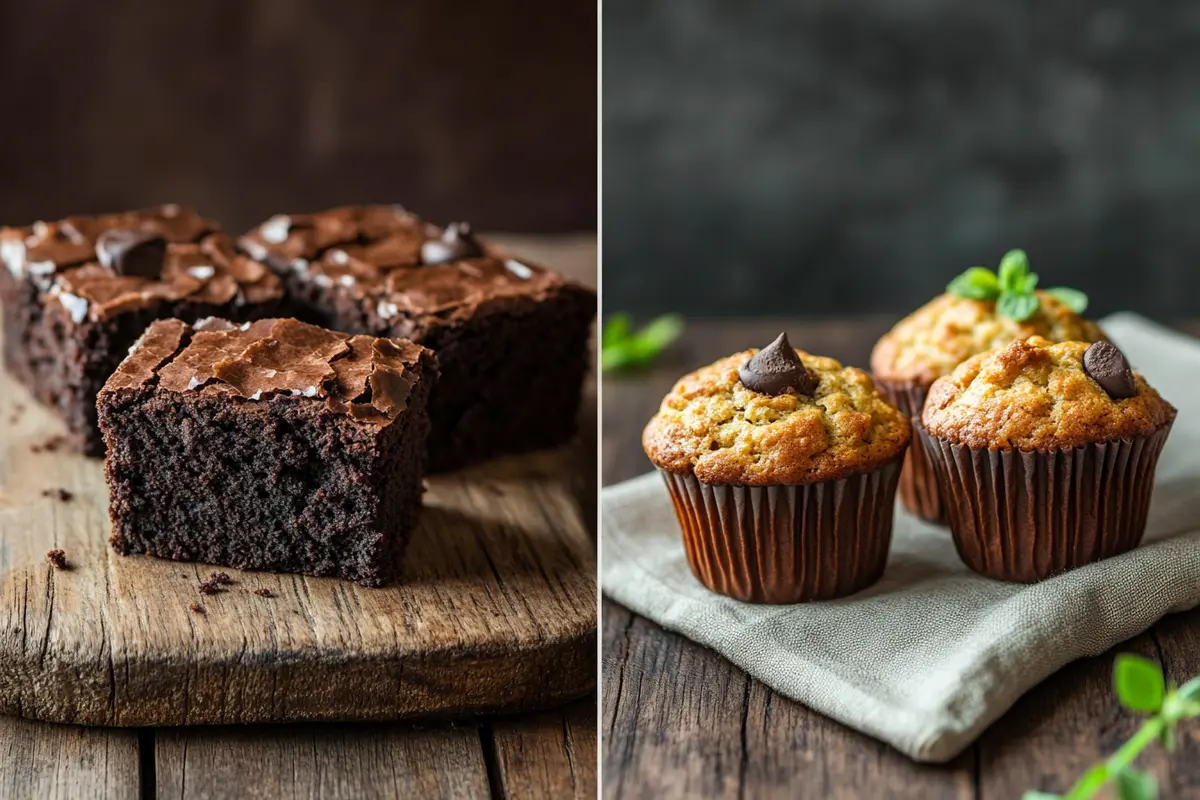Introduction
When it comes to baking mixes, people often assume that brownie mix and muffin mix are interchangeable. But is that really the case? While both are beloved staples for home bakers, their unique ingredient blends, textures, and uses set them apart in ways that could make or break your next bake. This article dives deep into the differences between brownie mix and muffin mix, helping you understand their distinct qualities and when (or if!) they can be swapped. Let’s unravel these mixes step by step for delicious, informed baking.
Understanding Brownie Mix
Ingredients in Brownie Mix

Brownie mix is famous for creating those rich, chocolatey bars we crave. But what’s really in the box? Brownie mixes generally contain cocoa powder, sugar, flour, and baking powder. Some even include chocolate chips or fudge for an extra decadent experience. The key to a brownie’s indulgent flavor is the high amount of chocolate-based ingredients. Compared to muffins, brownie mix has a larger proportion of fats, like oil or butter, which lends it that iconic moist, fudgy texture.
Texture and Consistency of Brownies
Brownies are meant to be dense, rich, and a little chewy. The batter is typically thick and smooth, thanks to the limited leavening agents. Unlike fluffy muffins, brownies tend to sink slightly rather than rise into a dome shape. The final texture can vary from fudgy to cakey based on how much fat or liquid you add. But one thing’s for sure—brownies are all about that melt-in-your-mouth richness.
Common Uses of Brownie Mix
Brownie mix isn’t just for making bars anymore!Creative bakers have transformed this mix into cookies, truffles, brownie waffles, and even experimented to see can you use brownie mix for cupcakes. If you’re feeling adventurous, you can use brownie mix as a dessert base for trifles or layer cakes. It’s versatile yet true to its chocolate-heavy roots. Whether baked solo or mixed with nuts and caramel swirls, brownies are an unbeatable crowd-pleaser.
Understanding Muffin Mix
Ingredients in Muffin Mix

Muffin mix, in contrast to brownie mix, is designed for a lighter, fluffier result. It typically contains flour, sugar, baking powder, and a binding ingredient like eggs. Unlike brownie mix, cocoa powder is often swapped for spices like cinnamon or fruit-based flavors. Muffin mixes also tend to have a higher amount of leavening agents (like baking powder or baking soda) to create that airy, dome-shaped top. Additionally, they may include dehydrated fruits, chocolate chips, or nuts to enhance flavor.
Texture and Consistency of Muffins

Muffins are known for their soft, springy texture and golden-brown crust. The batter is usually thicker than cake batter but thinner than brownie batter. When baked correctly, Muffins have a moist crumb on the inside while maintaining a slightly crisp top, but knowing the secret to making moist muffins makes all the difference. That dome shape is a telltale sign of a well-risen muffin. Plus, muffins can range from sweet to savory, making them incredibly versatile for both breakfast and snack-time indulgence.
Common Uses of Muffin Mix
Muffin mix isn’t just limited to muffins—oh no! With a few tweaks, muffin mix can be used for pancakes, quick breads, or even as a cobbler topping. Some adventurous bakers transform muffin batter into mini cupcakes or use it to make waffle-like creations. If you’re craving something sweet but don’t want to fuss too much, adding berries or chocolate chunks to your muffin mix creates a semi-homemade treat that feels gourmet but takes minutes to prepare.
Key Differences Between Brownie Mix and Muffin Mix
Ingredient Composition Differences
The first major difference between brownie mix and muffin mix lies in their ingredient composition. Brownie mix is heavily reliant on cocoa powder or chocolate, along with a generous amount of sugar and fats like butter or oil. These ingredients contribute to its rich and moist structure. In contrast, muffin mix typically features a more balanced combination of flour, sugar, leavening agents, and flavor add-ins such as fruit or spices. Muffin mixes also have a higher proportion of baking powder or baking soda, helping them achieve that fluffy rise.
Interestingly, you’ll notice that fats in muffin mix are often lighter, like vegetable oil or melted butter, which creates a tender crumb without the denseness of brownies. Muffins also lean toward including milk or yogurt to add moisture without becoming overly heavy.
Variations in Texture and Consistency
Here’s where things really get interesting! Brownie texture is typically described as dense, fudgy, or chewy—almost like a rich dessert bar rather than a bread-like treat. The minimal use of leavening agents and the abundance of sugar and fats help maintain that gooey center.
Muffins, on the other hand, are known for their light, airy consistency with a slightly crisp exterior. They have a bread-like structure that breaks apart into soft, moist pieces when pulled apart. While brownies usually stick together in thick slices, muffins crumble delicately with every bite. Muffins also have that dome-shaped rise, which is a visual cue for their fluffy, airy nature.
Differences in Preparation Methods
Although both mixes are fairly straightforward, there are notable differences in how they’re prepared. With brownie mix, you typically mix wet ingredients (like eggs, oil, and water) with the dry mix until just combined. Overmixing is avoided to preserve the gooey texture.
With muffin mix, on the other hand, there’s a bit more focus on aeration. Muffin batter requires folding the ingredients gently to ensure the batter stays light and doesn’t collapse. Overmixing can lead to dense, chewy muffins—almost like a bread instead of a soft pastry. Additionally, muffin mix often benefits from resting the batter for a few minutes to allow the dry ingredients to absorb the liquids fully, giving that dome-shaped rise during baking.
Nutritional Differences
Nutritional Content of Brownie Mix and Muffin Mix (Per 100g)
| Nutrient | Brownie Mix (Per 100g) | Muffin Mix (Per 100g) |
|---|---|---|
| Calories | 450 kcal | 380 kcal |
| Total Fat | 20 g | 10 g |
| Saturated Fat | 10 g | 2 g |
| Sugar | 45 g | 22 g |
| Protein | 5 g | 6 g |
| Carbohydrates | 60 g | 65 g |
| Fiber | 2 g | 3 g |
| Sodium | 300 mg | 260 mg |
When it comes to nutrition, brownies and muffins also differ significantly. Brownies are typically higher in sugar, saturated fats, and calories due to their chocolate content and rich ingredients. They’re definitely more of an indulgent dessert rather than a healthy snack. Muffins, while not always “healthy,” can be made with better-for-you ingredients like whole wheat flour, fruits, and nuts, making them a better option for breakfast or a midday snack.
Store-bought muffins can still pack a hefty sugar punch, though, especially if they’re loaded with chocolate chips or sugary toppings. However, their flexibility means you can easily modify them with healthier substitutions like honey instead of sugar or Greek yogurt instead of butter. Brownie mix, by contrast, has less room for such alterations without sacrificing its iconic fudgy taste.
Key Takeaways and Practical Baking Tips
Ingredient Substitutions: Can You Swap Brownie Mix and Muffin Mix?
One of the most common questions bakers ask is whether they can use brownie mix and muffin mix interchangeably. The answer? Sometimes, but with a few adjustments. If you’re trying to turn brownie mix into muffins, you’ll need to add extra leavening (like baking powder or baking soda) and also know whether do you spray Pam for brownies.and potentially reduce the sugar and fat content. This helps achieve a fluffier, muffin-like texture.
On the other hand, turning muffin mix into brownies is trickier. Muffin mix lacks the rich chocolate base, so you’ll need to add cocoa powder or melted chocolate to create that classic brownie flavor. Additionally, you’ll want to reduce the leavening agents to avoid a cake-like rise and instead aim for that dense, chewy texture.
Best Ways to Customize Brownie Mix and Muffin Mix
Both brownie and muffin mixes are incredibly versatile and can be customized with add-ins for an elevated treat. Here are a few ideas:
- Brownie Mix Add-Ins: Chocolate chips, crushed walnuts, caramel swirls, or even espresso powder for an added kick.
- Muffin Mix Add-Ins: Fresh or dried fruits, cinnamon, streusel toppings, or even savory options like cheese and herbs.
For those looking to get creative, you can even blend the two—think chocolate swirl muffins made with brownie and muffin batter combined!
When to Use Brownie Mix vs Muffin Mix
Ultimately, the choice between brownie mix and muffin mix comes down to your cravings and baking goals. If you’re in the mood for something rich, indulgent, and full of chocolatey goodness, brownies are the way to go. If you prefer a light, snackable option that pairs well with coffee or tea, muffins will hit the spot.
For special occasions like birthdays or dessert tables, brownies often steal the show as the indulgent treat everyone reaches for. Muffins, meanwhile, shine as versatile options for breakfast gatherings, brunch, or even lunchbox snacks.
Common Mistakes to Avoid
- Overmixing Muffin Batter: This can cause dense, rubbery muffins instead of light and fluffy ones.
- Underbaking Brownies: Brownies need a careful balance—pull them out just when the center looks slightly set to avoid dry, crumbly results.
- Skipping Add-Ins: Both mixes benefit from add-ins that complement their base flavors, so don’t be afraid to experiment!
By knowing the differences between brownie mix and muffin mix and how to make smart substitutions or customizations, you’ll always end up with the perfect baked treat—whether it’s a decadent brownie or a fluffy muffin.
Frequently Asked Questions
Can I use brownie mix to make muffins?
Yes, you can, but you’ll need to make a few adjustments. Since brownie mix is richer and denser, you should add additional leavening agents, like baking powder, to help the batter rise like muffins. You may also need to lighten the fat content and add a splash of milk or yogurt for a fluffier result.
Can I use muffin mix to make brownies?
It’s possible, but not ideal without some serious tweaking. Muffin mix lacks the cocoa content that makes brownies so rich and chocolatey. You’ll need to add cocoa powder, melted chocolate, or even chocolate syrup to mimic the flavor. Also, you should reduce the leavening to avoid a cake-like texture and make the batter denser.
What happens if I bake brownie mix in a muffin pan?
You’ll end up with “brownie bites” or mini brownies! Brownie mix baked in a muffin pan tends to stay rich and dense but will have a slightly crisp exterior due to the smaller portion size. Be sure to adjust the baking time, as smaller portions bake faster—usually 10–15 minutes less than a full pan.
Are there health differences between brownies and muffins?
Yes, there are. Brownies tend to be higher in sugar, saturated fats, and calories due to the chocolate and butter content. Muffins, on the other hand, can be slightly healthier—especially if made with whole grains, nuts, and fruits. However, store-bought muffins can be surprisingly high in sugar and calories, so homemade versions allow you to control the ingredients for a healthier option.
Can I add fruit or chocolate chips to brownie or muffin mixes?
Absolutely! Both mixes are very customizable. You can add berries, dried fruits, or chocolate chips to either mix to enhance their flavors. For muffins, blueberries and raspberries work great, while brownies benefit from chunks of dark chocolate, caramel, or even peanut butter swirls.
Conclusion
Understanding the differences between brownie mix and muffin mix can elevate your baking game, whether you’re aiming for a decadent chocolate brownie or a fluffy, fruit-filled muffin. By learning their unique ingredients, textures, and preparation methods, you’ll always bake with confidence. So, grab your favorite mix, experiment with some fun add-ins, and enjoy your delicious creations! Happy baking! 🎂

